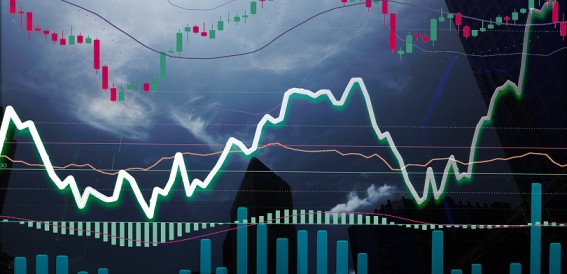The concept of the Risk-Free Rate of Return stands as a fundamental principle in finance, indicating the theoretical return on investment without the impact of risk. It serves as a benchmark or baseline for assessing the potential gains from an investment while considering the element of risk.
Understanding this rate is crucial as it sets a standard against which investors can measure the performance and viability of other investment opportunities across different asset classes and financial markets.
Topics Covered:
Defining the Risk-Free Rate
The Risk-Free Rate of Return is a foundational concept in finance, symbolising the theoretical return on an investment that carries negligible or no financial risk. It holds a crucial position in financial theory and valuation models, signifying the minimum anticipated return for an investor when deploying capital, and acknowledging the time value of money while ensuring an absence of financial loss. This rate serves as a benchmark for evaluating the potential returns of investments by representing a risk-free baseline against which other opportunities are measured.
Typically, government-issued securities, particularly short-term treasury bills or bonds , are used as proxies for the Risk-Free Rate. These financial instruments are perceived as virtually risk-free due to their backing by governments, which are generally assumed to have minimal risk of defaulting on their debt obligations. Investors often consider these government securities as a benchmark for risk-free investments, providing a baseline against which other investment opportunities are compared.
The Risk-Free Rate plays a pivotal role in various financial calculations and models. For instance, it serves as a key component in the Capital Asset Pricing Model (CAPM), a tool used to determine an asset’s expected return based on its risk relative to the market as a whole. Additionally, it influences the valuation of options and other derivatives, serving as a critical input in Black-Scholes option pricing models.
Recommended Read: Volume in the Stock Market
Understanding the Risk-Free Rate’s significance enables investors, financial analysts, and economists to evaluate the potential returns of various investment opportunities while factoring in the inherent risks. By comparing an investment’s expected return against the Risk-Free Rate, investors can gauge whether the investment adequately compensates for the risk taken.
Note
It’s important to note that while government securities are commonly used to estimate the Risk-Free Rate, no investment is entirely free of risk. Even government bonds carry some level of risk, such as inflation risk or interest rate risk, albeit being relatively low compared to other investments. Therefore, the Risk-Free Rate serves as a theoretical construct to assess the minimum expected return and to evaluate risk-adjusted returns across diverse investment options.
Must Read: Meaning of Demat Account
Begin your investing journey today. Your Demat account is the first step.
Factors Affecting the Risk-Free Rate
Several factors influence the Risk-Free Rate of Return, a critical parameter in financial markets. Primarily, central bank monetary policies, particularly interest rate decisions, significantly impact this rate.
Economic conditions, inflation expectations, and currency stability also exert notable influence. Government bond yields, specifically those of highly stable economies, serve as a benchmark for the Risk-Free Rate. Moreover, geopolitical events, global economic uncertainties, and market sentiment affect investors’ perceptions of risk, consequently impacting this rate.
As these factors fluctuate, the Risk-Free Rate adjusts accordingly, reflecting the prevailing financial landscape’s stability and risk perceptions. Understanding these influences aids investors and financial analysts in evaluating and adjusting investment strategies in response to changing market conditions.
Calculation
The Risk-Free Rate of Return serves as a cornerstone in financial models, notably the Capital Asset Pricing Model (CAPM), which aids in calculating expected returns on investments. CAPM uses a formula where the return on a security (Ra) equals the risk-free rate (Rf) plus the product of the security’s beta (Ba) and the market risk premium (Rm – Rf). This model estimates returns by factoring in the risk-free rate and the asset’s volatility, known as beta.
Recommended Read: Advantages and Disadvantages of Stock Split
The Risk-Free Rate (Rf) is foundational in this formula, representing the minimum return required to compensate for the absence of risk. Meanwhile, the market risk premium denotes the additional return expected for bearing market risk compared to the risk-free investment. Beta (Ba) quantifies the asset’s volatility concerning the market, determining how much an asset’s price moves concerning market fluctuations. CAPM’s utilisation of these elements aids in estimating expected returns on securities by balancing risk and potential returns, guiding investment decisions.
Example
Suppose the current risk-free rate (Rf) stands at 3%. Consider a stock with a beta (Ba) of 1.5, and a market risk premium (Rm – Rf) is 6%. Using the CAPM formula:
Ra = 3% + [1.5 x 6%]
Ra = 3% + 9%
Ra = 12%
In this example, the expected return (Ra) for the stock, calculated using the CAPM model, is 12%. This signifies that considering its beta and the market risk premium, this stock is expected to yield a return of 12%, factoring in the risk-free rate and its systematic risk in the market.
Recommended Read: Share valuation
Conclusion
Understanding the Risk-Free Rate of Return is pivotal in evaluating investment opportunities, providing a benchmark for potential returns while considering risk. This fundamental concept serves as a reference point, allowing investors to assess various investments across markets.
Free Rate acts as a theoretical concept, its application remains integral in assessing investment viability amid varying risk landscapes.
Invest smarter, faster. Open your Free Online Demat Account today!











